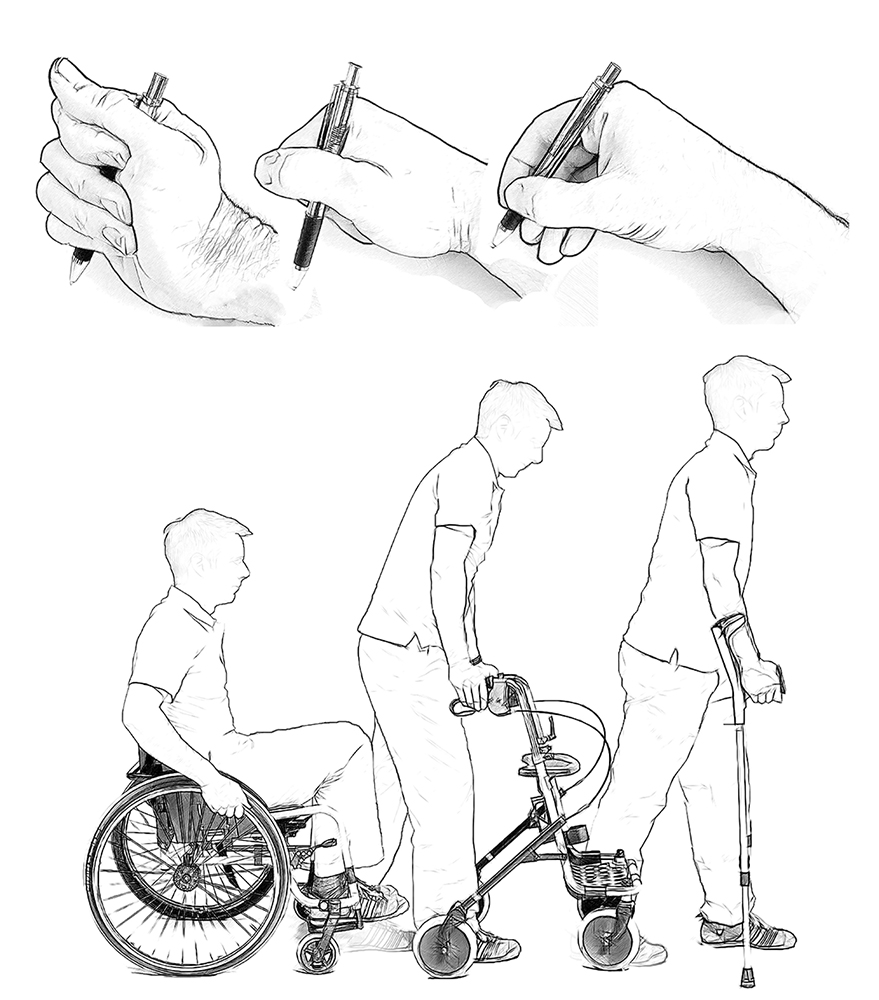Research in Paraplegiology
Nogo-A Antibody: the first Effective Treatment in Spinal Cord Injury
Nogo-A antibody treatment improves neurological and functional recovery in acute motor-incomplete cervical spinal cord injuries — a multi-center European randomized double-blinded placebo-controlled phase-II clinical proof of concept trial.

Traumatic spinal cord injury (SCI) causes lifelong sensorimotor and autonomic dysfunction that dramatically affects quality of life and is associated with substantial economic burdens. After injury, nerves in the brain and spinal cord no longer grow together. One reason for this are inhibitors (so-called Nogo-A proteins) which actively inhibit the growth of injured nerve fibers in the spinal cord. A new therapeutic approach aims to temporarily switch off these inhibitory proteins, there-by stimulating axonal sprouting of injured nerves. In order to block Nogo-A, the antibodies (AK) in this trial were injected directly into the patient's spinal canal below the level of injury. It is important that the antibodies are applied within the first few weeks after the acute spinal cord injury, as the nerve fibers are still potentially able to recover during this time window.
After promising results in experiments involving spinal cord injuries, researchers took a significant step forward in 2006–2011 by conducting a study involving 52 patients. The main goal was to ensure that the treatment was safe and well-tolerated. Led by the Spinal Cord Injury Center at Balgrist University Hospital, the study proved successful, motivating us to move on to the next phase of research. We successfully conducted phase II of the study as part of the European Multicenter Study about Spinal Cord Injury (EMSCI). Funding for this trial came from Horizon 2020, SERI, Swiss Paraplegic Foundation, and Wings for Life.
Since May 2019, a total of 126 patients have been treated and included in the NISCI study at specialized paraplegic centers across Germany, Switzerland, Spain, and the Czech Republic. These patients were adults aged 18 to 70 who had experienced acute traumatic cervical spinal cord injuries within 4 to 28 days post-injury. They were randomly assigned to either receive the experimental antibody or a placebo. Out of the 126 patients, 78 received the antibody while the remaining 48 in the control group received a placebo. The antibody was administered within 30 days through six intrathecal injections of either the trial drug or the placebo.
Overall, the new treatment was safe for everyone involved. No adverse drug reactions (ADRs) occurred during intrathecal administration of the drug or during the four-month follow-up period. When looking at the whole group, including those with complete spinal cord injuries, there was not a big difference in how well people could move their arms and hands after treatment. However, when focusing on people with incomplete spinal cord injuries (63 out of the 126), we found that those who received NG101 saw significant improvements in both their ability to move and in their everyday function.
The investigator-initiated multicenter, multinational trial was conducted in accordance with Good Clinical Practice and the Declaration of Helsinki.
Nogo-A-Antikörpertherapie: erste wirksame Therapie bei akuten Rückenmarksverletzungen
Traumatische Rückenmarksverletzungen (SCI) verursachen lebenslange sensomotorische und autonome Funktionsstörungen, die die Lebensqualität beeinträchtigen und mit erheblichen wirtschaftlichen Belastungen verbunden sind. Nach einer Verletzung wachsen die Nerven in Gehirn und Rückenmark nicht mehr zusammen. Ein Grund dafür sind Inhibitoren (sogenannte Nogo-A-Proteine), die das Wachstum von Nervenfasern aktiv hemmen. Ein neuer Therapieansatz soll dem entgegenwirken, indem diese hemmenden Proteine vorübergehend ausgeschaltet werden. In die NISCI-Studie wurden 126 Patientinnen und Patienten mit akuter traumatischer zervikaler SCI in spezialisierten Paraplegikerzentren in europäischen Zentren eingeschlossen. Die Rekrutierung erfolgte auf Grundlage der individuellen Prognose für die Erholung des Upper Extremity Motor Score (UEMS), des motorischen Niveaus der SCI und des AIS-Grads. Insgesamt erhielten 78 Patientinnen und Patienten den Antikörper und 48 ein Placebo intrathekal verabreicht. Das primäre Ziel der NISCI-Studie waren die Förderung der motorischen Erholung in den oberen Extremitäten und die daraus resultierende Verbesserung der Unabhängigkeit. Letztere wird mit dem Spinal Cord Independence Measure (SCIM) gemessen. Anti-Nogo erwies sich als sicher und gut verträglich. Die mit Nogo-A behandelten Personen mit einer motorisch inkompletten Läsion erholten sich deutlich besser als die Personen der Kontrollgruppe.
At a Glance
Nogo-A Antibody Treatment Improves Neurological and Functional Recovery in Acute Traumatic Cervical Spinal Cord Injury
Key Collaborators
Project lead: Prof. Dr. med. Armin Curt;
Prof. Dr. med. Patrick Freund
Prof. Dr. Martin Schwab
Andrea Prusse
Iris Krüsi
Departments and Partners
Balgrist University Hospital: Spinal Cord Injury Center
University of Zurich
Clinical Relevance
Our findings restate the potential of intrathecal treatment with the anti-Nogo-A antibody NG-101 as a regenerative therapy for acute motor-incomplete cervical SCI, offering increased motor recovery and improved functional independence. We believe that our research contributes significantly to the understanding of potential treatments for SCI, for which effective therapies are sorely lacking.
Further Information
> NISCI 2020
> Spinal Cord Injury Center UZH
